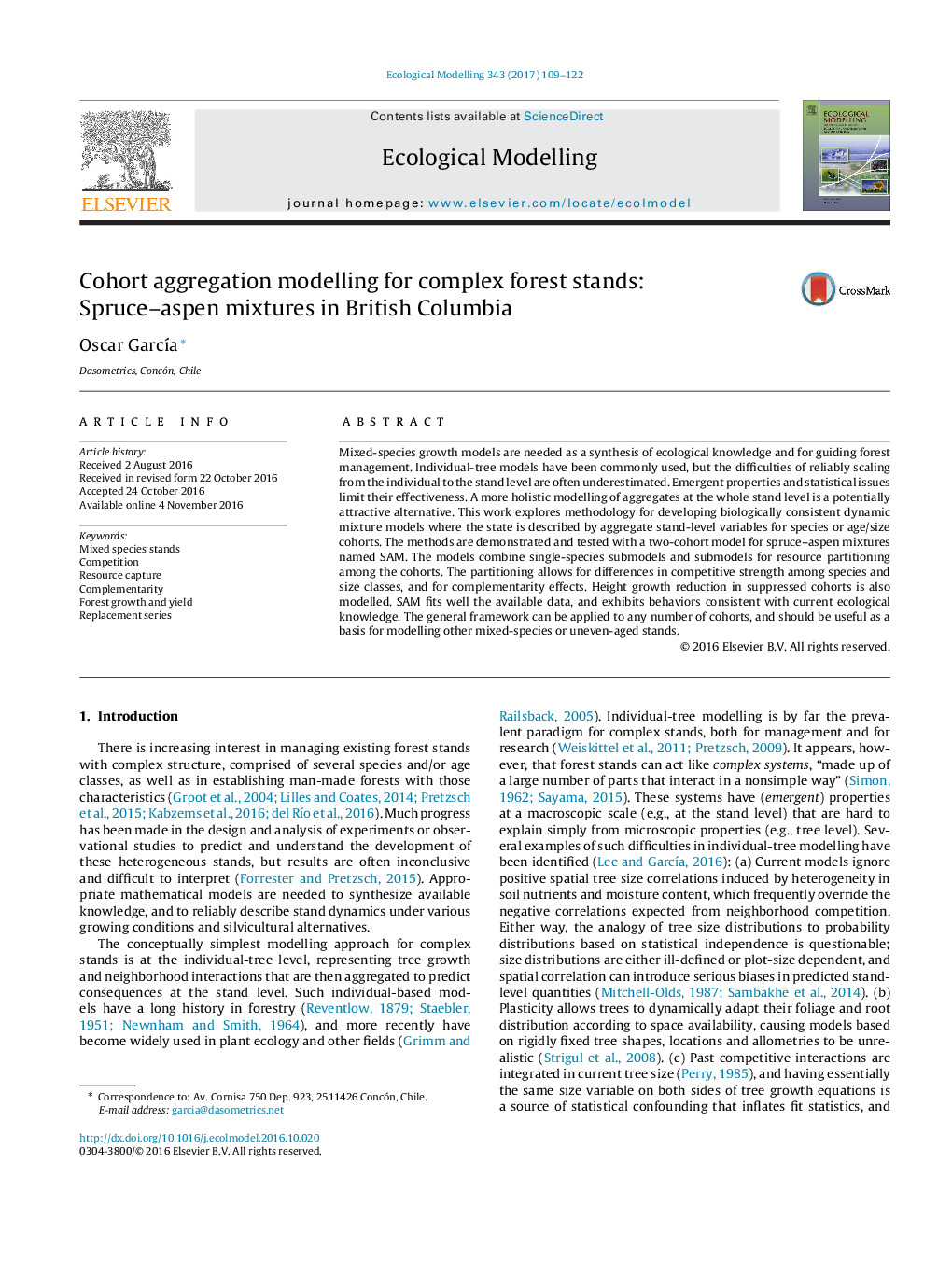| Article ID | Journal | Published Year | Pages | File Type |
|---|---|---|---|---|
| 5742306 | Ecological Modelling | 2017 | 14 Pages |
â¢Mixed-species stands are complex systems, more than a sum of individual trees.â¢That and other factors limit the effectiveness of individual-based approaches.â¢Prediction and control are possible at coarser scales, aggregating into cohorts.â¢A general methodology and a model for spruce-aspen mixtures (SAM) were developed.â¢SAM fits well the data, and generates ecologically reasonable behaviors.
Mixed-species growth models are needed as a synthesis of ecological knowledge and for guiding forest management. Individual-tree models have been commonly used, but the difficulties of reliably scaling from the individual to the stand level are often underestimated. Emergent properties and statistical issues limit their effectiveness. A more holistic modelling of aggregates at the whole stand level is a potentially attractive alternative. This work explores methodology for developing biologically consistent dynamic mixture models where the state is described by aggregate stand-level variables for species or age/size cohorts. The methods are demonstrated and tested with a two-cohort model for spruce-aspen mixtures named SAM. The models combine single-species submodels and submodels for resource partitioning among the cohorts. The partitioning allows for differences in competitive strength among species and size classes, and for complementarity effects. Height growth reduction in suppressed cohorts is also modelled. SAM fits well the available data, and exhibits behaviors consistent with current ecological knowledge. The general framework can be applied to any number of cohorts, and should be useful as a basis for modelling other mixed-species or uneven-aged stands.
Graphical abstractDownload full-size image
